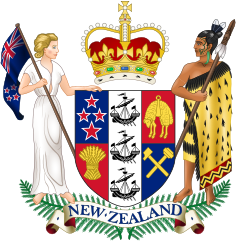| Part of a series on |
| New Zealand law |
|---|
 |
The first enactment of the New Zealand parliament (General Assembly), created by the New Zealand Constitution Act 1852, was the English Laws Act 1854, which established the applicability of all English laws in effect 14 January 1840, to New Zealand. The New Zealand Constitution Act 1846 was never implemented and was suspended.
Contents
- 1840s
- 1841
- 1842
- 1844
- 1845
- 1846
- 1847
- 1848
- 1849
- 1850s
- 1851
- 1853
- 1854
- 1856
- 1858
- 1860s
- 1860
- 1861
- 1862
- 1863
- 1864
- 1865
- 1866
- 1867
- 1868
- 1869
- 1870s
- 1870
- 1871
- 1872
- 1873
- 1874
- 1875
- 1876
- 1877
- 1878
- 1879
- 1880s
- 1880
- 1881
- 1882
- 1883
- 1884
- 1885
- 1886
- 1887
- 1888
- 1889
- See also
This is a list of acts of the New Zealand Parliament for the period up to and including part of the first year of the Liberal Government of New Zealand.